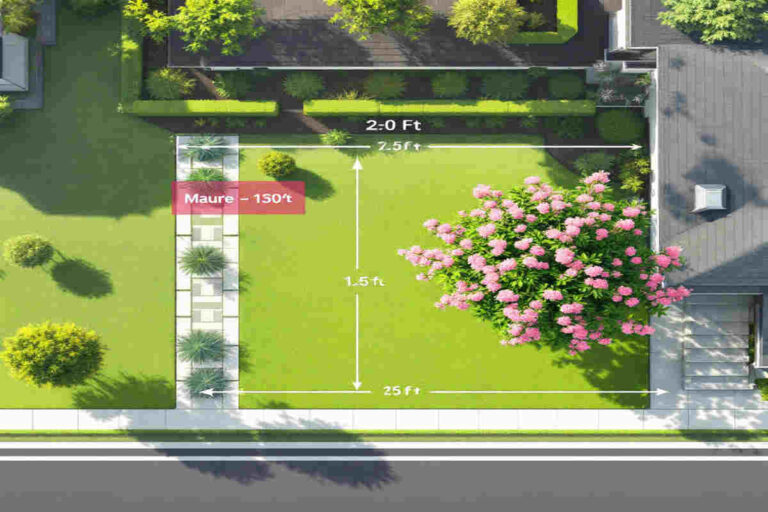Crepe myrtles are among the most beloved additions to gardens and yards, thanks to their vibrant blooms, attractive bark, and manageable sizes. However, as with any tree or shrub, proper planting distance from your home is essential to ensure both the plant’s health and your property’s safety.
Crepe myrtles, or Lagerstroemia, are versatile, fast-growing, stunning trees or shrubs that thrive in many climates. Their colorful blooms, ranging from pink to white, red, and lavender, make them a favorite choice among homeowners looking to add beauty and shade to their landscapes.
But planting these gorgeous trees too close to a house can lead to several issues, including root interference, moisture problems, and limited sunlight exposure. Proper planning and spacing are crucial to ensure the plant’s health and avoid damage to your home.
Understanding Crepe Myrtle Growth and Characteristics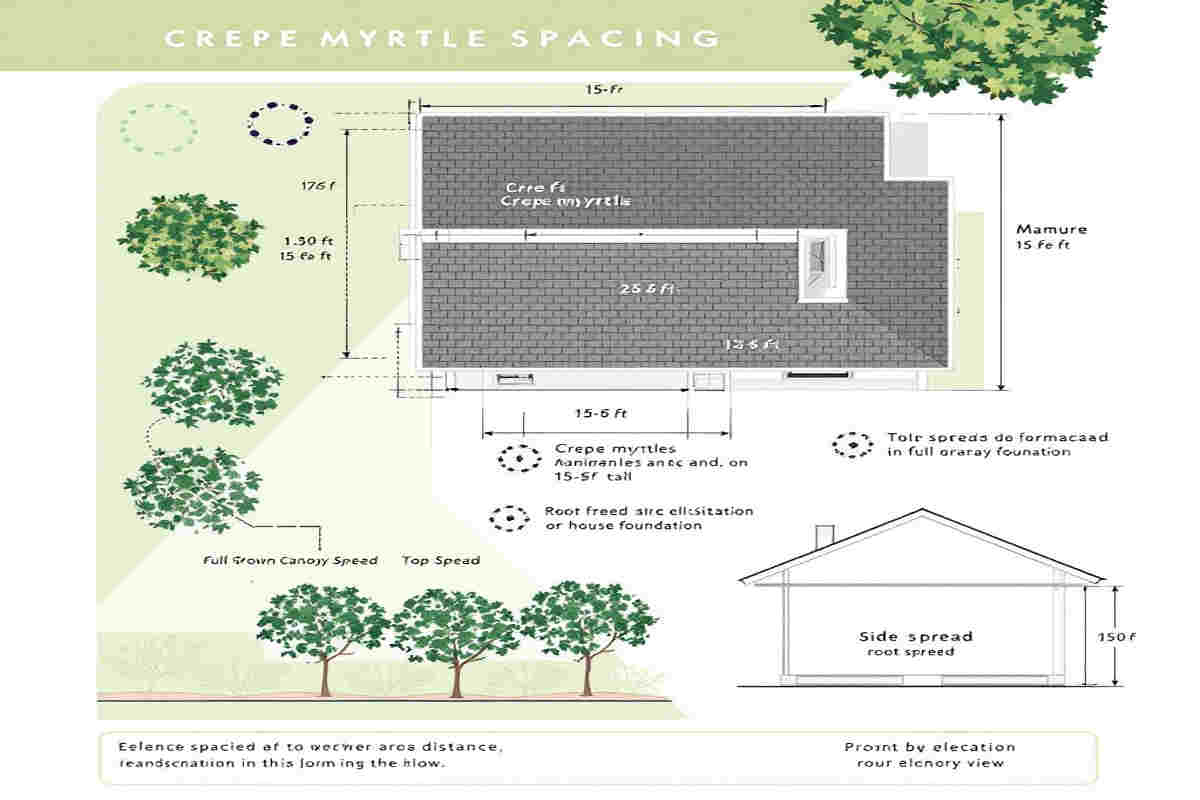
Before determining where to plant your crepe myrtle, it’s essential to understand its growth habits, varieties, and root system. This knowledge will help you make informed decisions about planting distance and care.
Varieties of Crepe Myrtle
Crepe myrtles come in various sizes, making them adaptable to different types of landscapes. They are generally divided into three categories:
- Tree varieties grow tall, reaching heights between 15 and 20 feet, and are ideal for larger yards.
- Shrub varieties: Smaller than tree types, they typically grow 5–7 feet tall, making them suitable for medium-sized spaces.
- Dwarf varieties: Perfect for small gardens or containers, these compact plants grow between 1 and 2 feet tall.
Flowering and Seasonal Dormancy
Crepe myrtles bloom during the warmer months, typically from late spring to early fall. Their flowers come in various colors, including purple, lavender, pink, red, white, and even bicolor. In winter, they go dormant, shedding their leaves and displaying smooth, peeling bark.
Root System and Growth Habits
One of the primary considerations when planting crepe myrtles is their root system. While their roots are not as aggressive as some trees, they still spread horizontally rather than growing deep. This characteristic makes proper spacing crucial to preventing damage to nearby structures like foundations or sidewalks.
Why Planting Distance Matters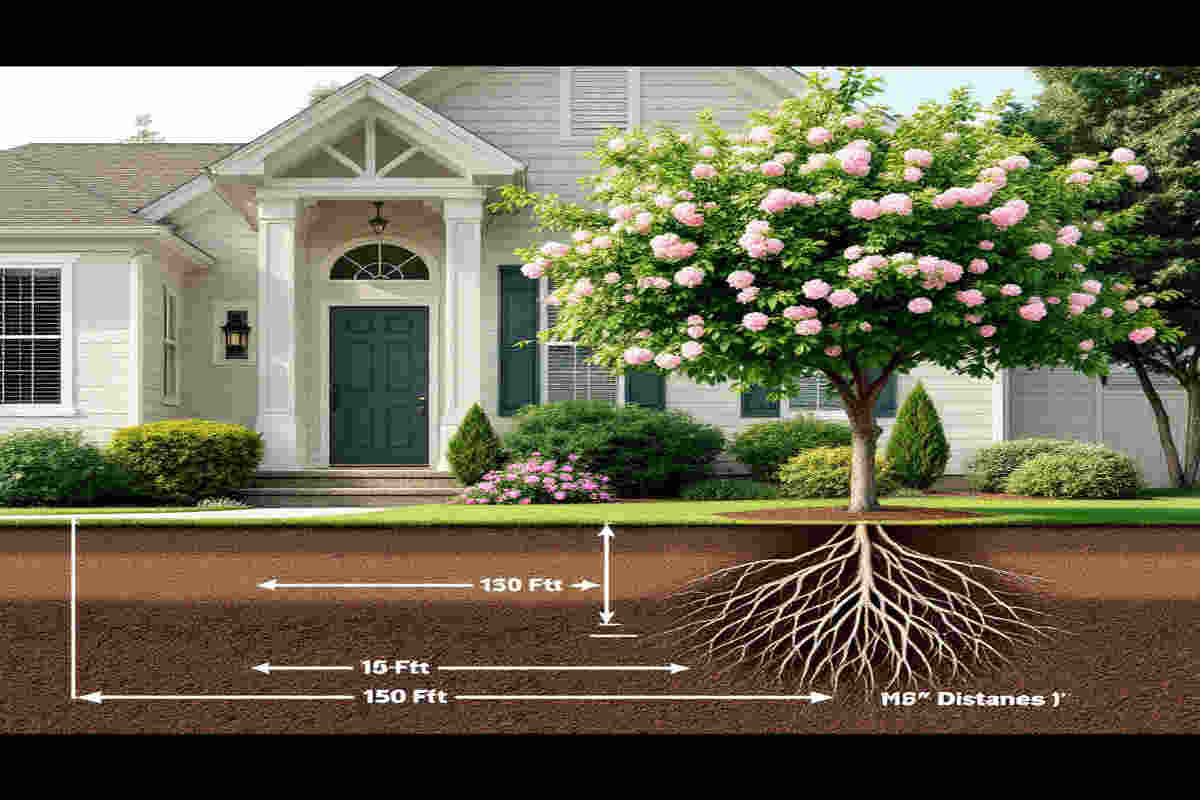
Planting distance is not just about aesthetics—it significantly impacts both the health of your crepe myrtle and the safety of your home. Let’s look at some key reasons why spacing matters.
See also home to get hot at night
Root Damage to Structures
Although crepe myrtle roots are not invasive, planting them too close to your house can lead to foundation issues over time. Their roots spread widely and can interfere with underground pipes, drainage systems, or even the stability of your home’s foundation.
Moisture and Pest Problems
Planting too close to your house can trap moisture between the tree and exterior walls, leading to mold or mildew growth. Additionally, dense foliage close to windows or eaves can attract pests like ants or termites.
Sunlight and Air Circulation
Crepe myrtles thrive in full sunlight, requiring at least 6 hours of direct sun daily. Planting too close to your house could block sunlight, leading to poor flowering and unhealthy growth. Proper distance also ensures better air circulation, reducing the risk of fungal diseases.
Maintenance and Pruning
When planted too close to a structure, crepe myrtles can become challenging to maintain. Regular pruning to prevent overgrowth toward the house can become a hassle if there isn’t enough space to work around the tree.
Recommended Distance to Plant Crepe Myrtle from Your House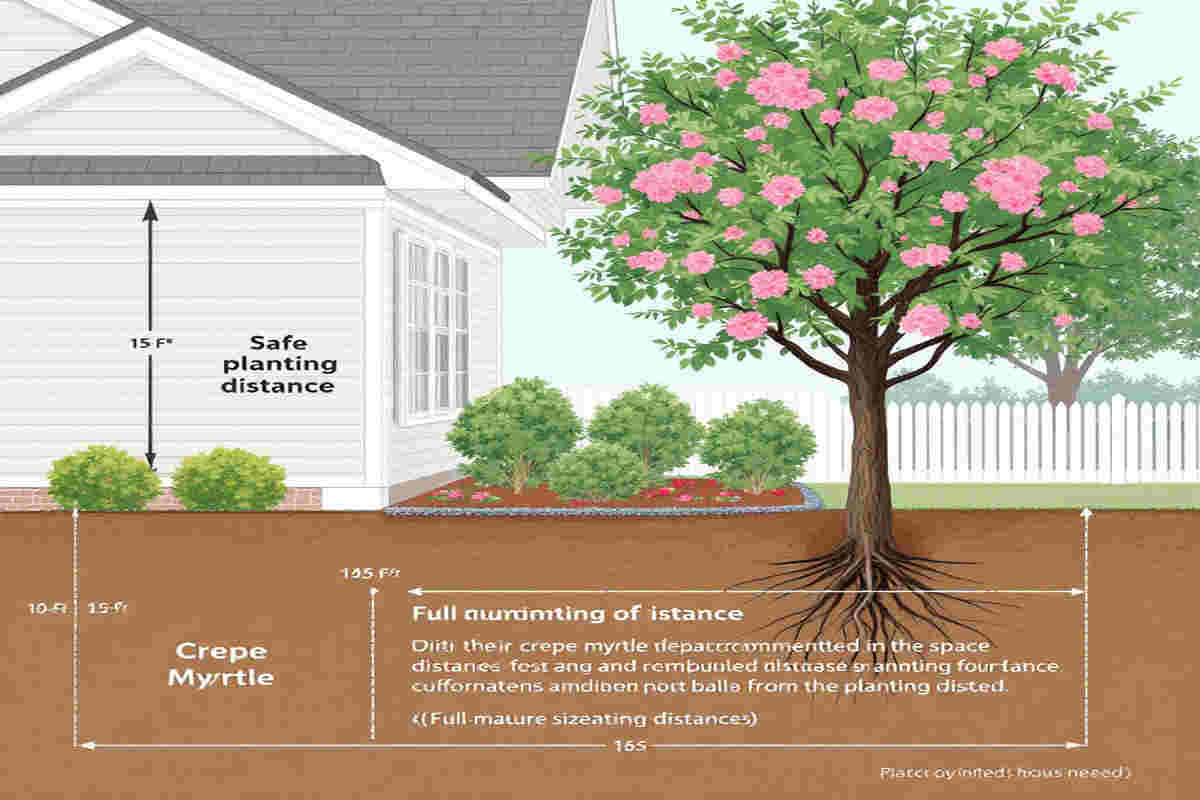
The optimal planting distance for crepe myrtles depends on their variety and size at maturity. Below are general guidelines to help you decide.
For Tree Varieties
- Plant 15 to 20 feet away from your house.
- This distance allows enough room for the tree’s canopy to grow without touching your roof or walls.
For Shrub Varieties
- These can be planted closer, around 5 to 7 feet from the house.
- Shrubs have a smaller canopy and root spread, making them less likely to interfere with structures.
See also you put a bee house
For Dwarf Varieties
- Dwarf crepe myrtles can be planted as close as 3 feet from your house.
- Since they are compact and perfect for tight spaces or container planting.
Factors to Consider
- Mature Size: Always account for the size of the crepe myrtle when fully grown.
- Local Climate and Soil: Trees in warm, sunny climates may grow larger, requiring more space.
- Nearby Structures: Avoid planting too close to walkways, driveways, or utility lines.
Table: Recommended Planting Distances
Crepe Myrtle VarietyDistance from HouseMature HeightBest Use
Tree 15–20 feet , 15–20 feet Large yards, shade trees
Shrub 5–7 feet 5–7 feet Medium spaces, hedges
Dwarf 3–5 feet, 1–2 feet. Small gardens, containers
Step-by-Step Guide to Planting Crepe Myrtle Near Your Home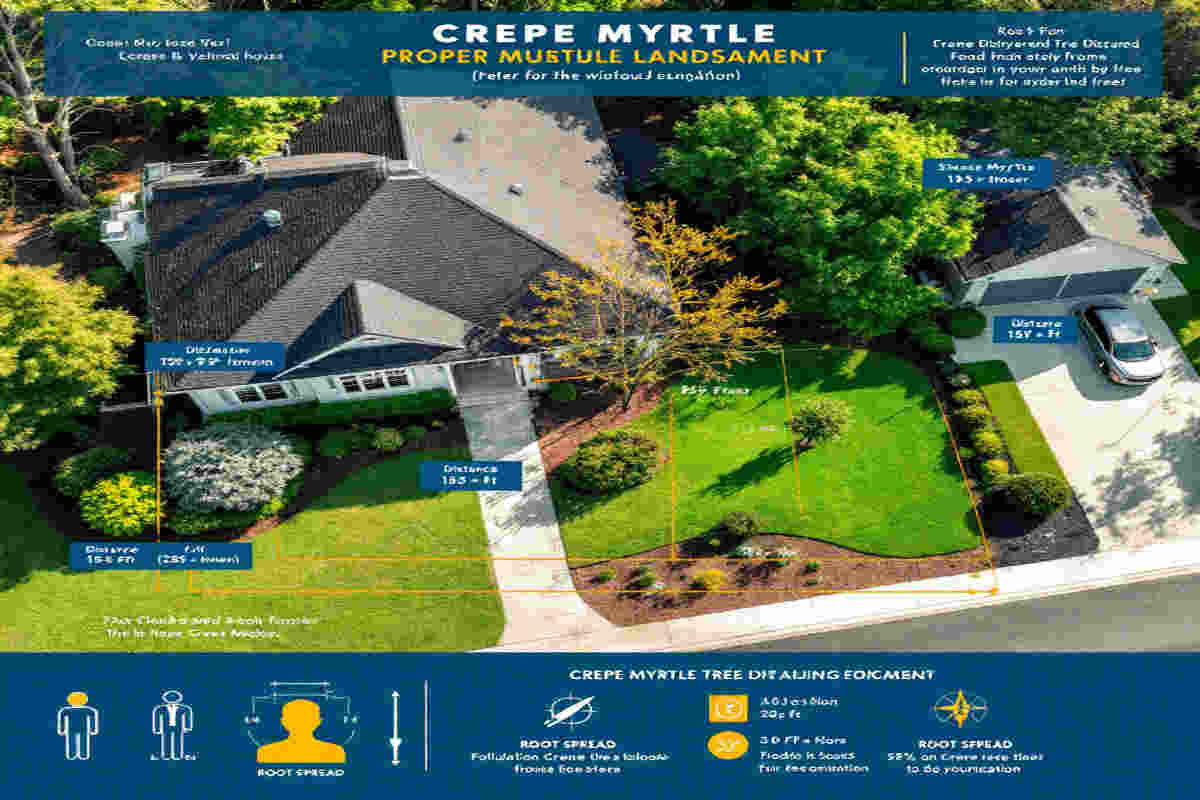
If you’re ready to plant a crepe myrtle near your house, follow this simple step-by-step guide to ensure success.
Choose the Right Time to Plant
- The best time to plant crepe myrtles is during their dormant season, from late fall to early spring. This allows the plant to establish roots before the growing season begins.
Select the Perfect Location
- Ensure the spot gets full sun for at least 6 hours daily.
- Avoid planting under eaves, gutters, or shaded areas.
Prepare the Soil
- Crepe myrtles prefer well-draining soil with a pH between 5.5 and 7.5.
- Amend clay or sandy soil with organic matter to improve drainage and fertility.
Dig the Proper Hole
- Dig a hole twice as wide as the root ball and the same depth as the container.
- This allows the roots to spread easily in all directions.
Plant Carefully
- Remove the crepe myrtle from its container and handle it by the root ball, not the trunk.
- Place the tree in the hole, ensuring the root collar is level with the ground.
Watering and Mulching
- Water the tree deeply 1–3 times weekly for the first few months.
- Apply 2–3 inches of mulch around the base, but keep it away from the trunk to prevent rot.
Fertilizing and Maintenance
- Use a high-nitrogen fertilizer in early spring to promote growth.
- Prune lightly to shape the tree, removing dead or crossing branches.
Special Considerations for Planting Near Your House
When planting crepe myrtles near your home, keep these special factors in mind:
- Drainage: Ensure proper grading around your house to prevent water pooling near the foundation.
- Eaves and Gutters: Avoid planting directly under areas where water drips, as this can lead to root rot.
- Root Barriers: Consider installing root barriers for shrubs or dwarf varieties to control root spread.
- Hardiness Zones: Crepe myrtles thrive best in zones 6–10. Be sure to choose a variety suited to your zone.
See also habitat for humanity house

